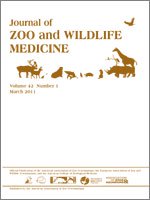Mortalities among birds of prey from anticoagulant rodenticide (AR) toxicosis have been documented in several countries. Reports on extent of exposure within regions of the United States are limited. This study investigated AR exposure and toxicosis in four species of birds of prey (red-tailed hawks [Buteo jamaicensis], barred owls [Strix varia], eastern screech owls [Megascops asio] and great horned owls [Bubo virginianus]) presented to a wildlife clinic in Massachusetts. The aims of this study are to document the proportion of these four species that died or were euthanized due to their presenting injuries that had detectable amounts of ARs in liver tissue; to identify and quantify ARs present; to describe clinical, postmortem, and histopathologic signs of toxicosis; to evaluate potential sublethal effects of AR exposure; and to associate liver AR level with toxicosis. Birds included in the study were sampled without regard to signs of AR toxicosis. Postmortem examinations were conducted, and liver samples were analyzed for AR residues. Of 161 birds tested, 86% had AR residues in liver tissue. The second-generation AR (SGAR) brodifacoum was identified in 99% of positive birds. Mortality from AR toxicosis was diagnosed in 6% of birds. No indications of sublethal effects of exposure were found, and no association between liver brodifacoum level and signs of toxicosis was apparent. Given the high proportion of birds in this study exposed to ARs, specifically brodifacoum, continued monitoring is warranted as new U.S. Environmental Protection Agency regulations on the sale and use of SGARs are enacted.
How to translate text using browser tools
1 March 2011
Anticoagulant Rodenticide Exposure and Toxicosis in Four Species of Birds of Prey Presented to a Wildlife Clinic in Massachusetts, 2006–2010
Maureen Murray
ACCESS THE FULL ARTICLE
Anticoagulant rodenticides
birds of prey
brodifacoum
Massachusetts
toxicosis





